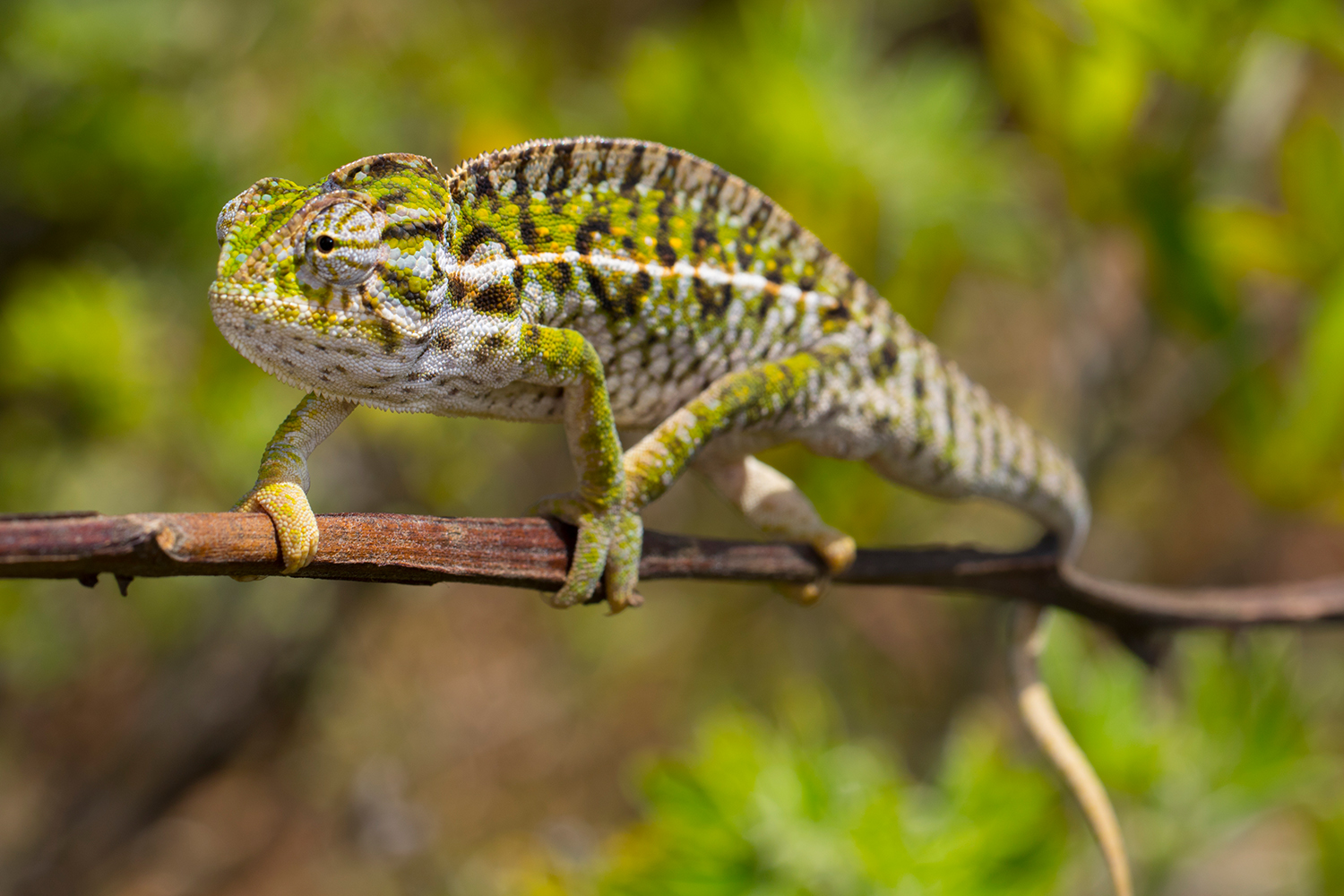An interesting husbandry experience from the USA was presented in a short note in the Herpetological Review. Twelve carpet chameleon hatchlings (Furcifer lateralis) from the same clutch were divided into four groups of three animals each. During the first ten weeks after hatching, two groups were provided with a daily UV index of up to 3 for 12 h, the other two groups with a UV index of up to 7. Reptisun 5.0 was used to achieve the different UV indices. Measurements were taken with the Solarmeter 6.5. The chameleons were allowed to avoid UVI up to 0. After six, eight and ten weeks, the carpet chameleons were measured and weighed. It was noticed that in weeks 6 and 10, the groups with the lower UV index were up to 25% heavier than the comparison groups.
The two authors conclude that higher UV indices during rearing in the first weeks could lead to slower growth rates in carpet chameleons. This would correspond to the observation in nature that young animals “sunbathe” rather rarely and stay more hidden in the bushes. Due to the small group of test subjects and mixed groups instead of individual keeping, you must still be cautious with conclusions here. In addition, it is unfortunately still largely unexplored whether and how chameleons can regulate their vitamin D3 regulation in artificial light compared to natural sunlight. Nevertheless, it is a very interesting approach that is certainly worth pursuing.
Furcifer lateralis (carpet chameleon): Impact of Ultraviolet Light on growth
Michael J. Nash, Christopher V. Anderson
Herpetological Review 52 (2), 2022


